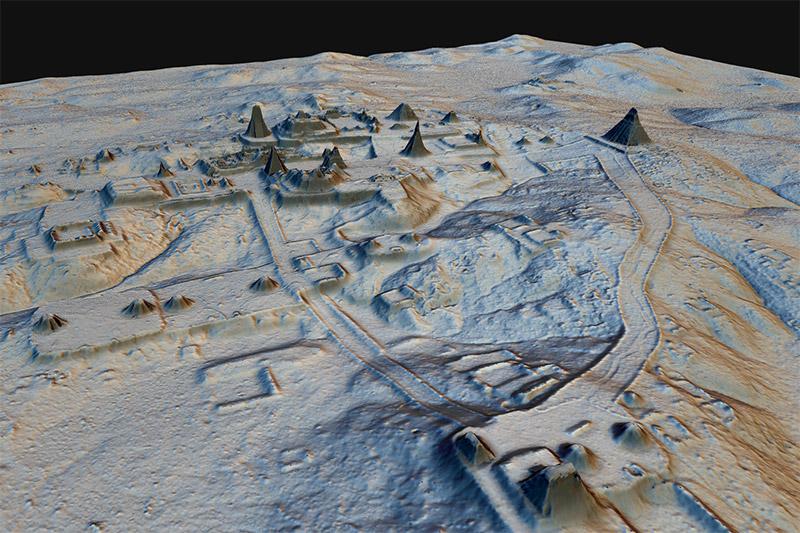Unprecedented study confirms massive scale of lowland Maya civilization
Tulane University researchers, documenting the discovery of dozens of ancient cities in northern Guatemala through the use of jungle-penetrating Lidar (light detection and ranging) technology, have published their results in the prestigious journal Science.
The article includes the work of Marcello Canuto, director of the Middle American Research Institute at Tulane, and Francisco Estrada-Belli, a research assistant professor at Tulane and director of the Holmul Archaeological Project since 2000. They worked with assistant professor of anthropology Thomas Garrison of Ithaca College as well as other scholars to make their discoveries in the Petén forest of Guatemala.
A consortium of 18 scholars from U.S., Europe and Guatemalan institutions including the Ministry of Culture and Sports were enabled by the Fundación PACUNAM (Mayan Heritage and Nature Foundation) to analyze lidar data covering over 2,100 square kilometers of the Maya Biosphere Reserve.
“Seen as a whole, terraces and irrigation channels, reservoirs, fortifications and causeways reveal an astonishing amount of land modification done by the Maya over their entire landscape on a scale previously unimaginable.”
Tulane researcher Francisco Estrada-Belli
"Since LiDAR technology is able to pierce through thick forest canopy and map features on the earth’s surface, it can be used to produce ground maps that enable us to identify human-made features on the ground, such as walls, roads or buildings,” Canuto said.
The PACUNAM LiDAR INITIATIVE (PLI), is the largest single lidar survey in the history of Mesoamerican archaeology. The collaborative scientific effort has provided fine-grained quantitative data of unprecedented scope to refine long-standing debates regarding the nature of ancient lowland Maya urbanism. Specifically, the key identifications of this study are:
• 61,480 ancient structures in the survey region, resulting in an estimated population of 7 to 11 million at height of the Late Classic period (650-800 CE). The structures include isolated houses, large palaces, ceremonial centers and pyramids.
• 362 square kilometers of terraces or otherwise modified agricultural terrain and another 952 square kilometers of viable farmland, demonstrating a landscape heavily modified for the intensive agriculture necessary to sustainably support massive populations for many centuries.
• 106 square kilometers of causeways within and between urban centers and numerous, sizeable defensive earthworks. This substantial infrastructure investment highlights the interconnectivity of cities and hinterlands as well as the scale of Maya warfare.
Both Canuto and Estrada-Belli noted that discoveries were made in a matter of minutes, compared to what would have taken years of fieldwork without the LiDAR technology.
“Seen as a whole, terraces and irrigation channels, reservoirs, fortifications and causeways reveal an astonishing amount of land modification done by the Maya over their entire landscape on a scale previously unimaginable,” Estrada-Belli said.

